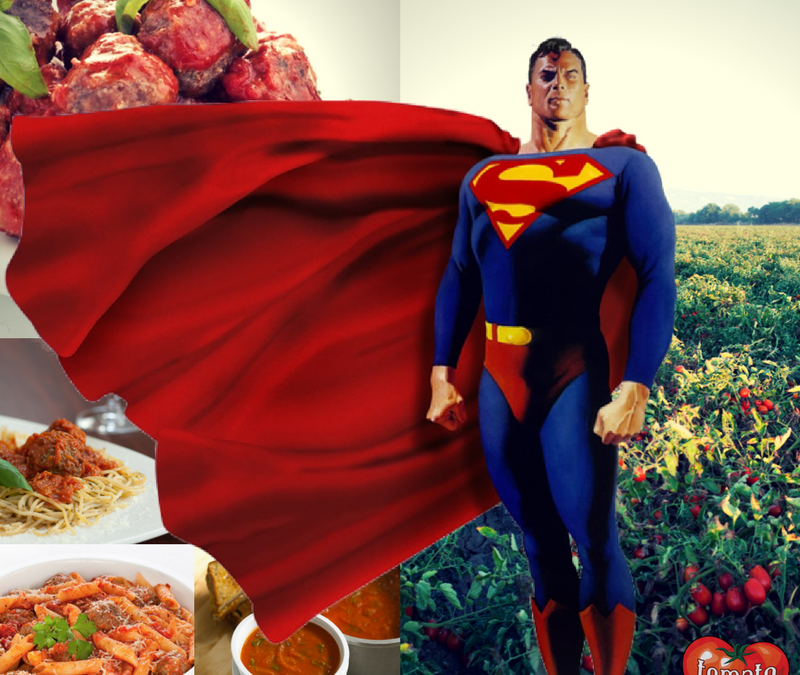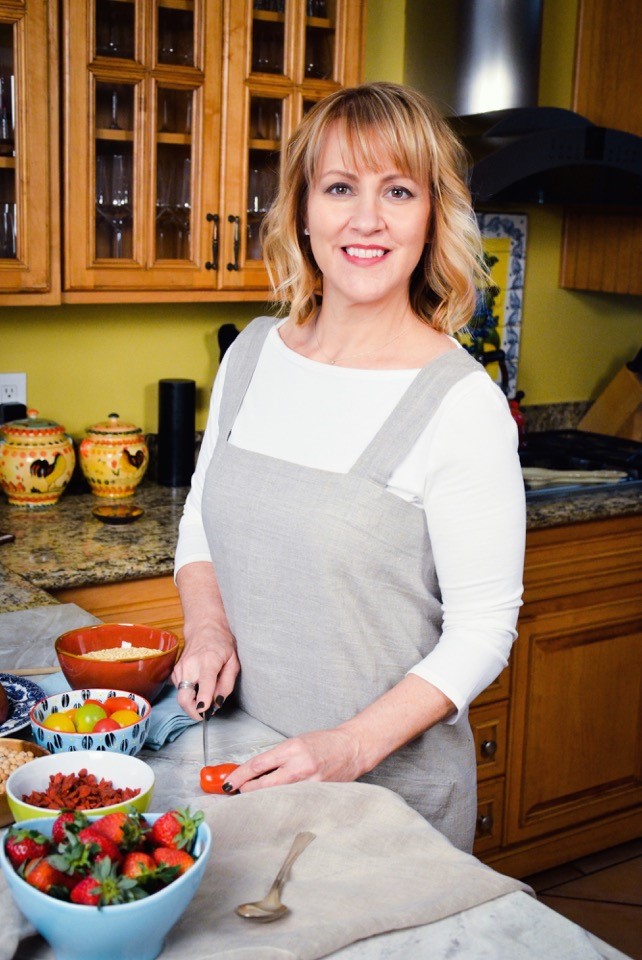
What is Lycopene?
What is Lycopene?
What is lycopene, and are there any health benefits associated with it? Dietitian Sharon Palmer explains this fascinating antioxidant and why you should consume more of it.
Maybe there’s a reason superheroes wear red capes! Lycopene [pronounced lie-kuh-peen], the naturally occurring compound that gives tomatoes their rich red color, has some pretty super powers. Natural chemical reactions in your body create free radicals, which move around the body setting off chain reactions that can damage cells and promote disease. Lycopene is an antioxidant compound in tomatoes that destroys these free radicals. Like other antioxidants, it has anti-inflammatory and anti-cancer effects.
According to the American Cancer Society, lycopene helps prevent damage to our genes. Eating plenty of lycopene-rich foods, like tomato products (canned tomatoes, marinara sauce, salsa, and tomato soup), may lower risk of lung cancer and could protect against aggressive prostate cancer. Studies also show that people who eat plenty of plant foods rich in carotenoid antioxidants like lycopene have a lower risk of heart disease.
While this powerful antioxidant can also be found in foods like pink grapefruit, watermelon and papaya, around 80% of the lycopene in the American diet comes from tomatoes and tomato products. Cooking tomatoes makes lycopene more available to the body, so marinara sauce and tomato soup actually have more lycopene than the same amount of fresh tomatoes (see chart). Eating your tomatoes with a little fat, like a drizzle of olive oil or a slice of avocado, also increases the amount of lycopene your body can absorb.
Amount of Lycopene in Common Foods
| Serving | Lycopene (milligrams) | |
| Tomato puree | 1 cup | 54 |
| Tomato sauce | 1 cup | 46 |
| Tomato juice, canned | 1 cup | 22 |
| Vegetable juice cocktail | 1 cup | 18 |
| Tomato soup, canned, condensed | 1 cup | 16 |
| Stewed tomatoes | 1 cup | 10 |
| Watermelon* | 1 ½ cups | 9-13 |
| Canned tomatoes | 1 cup | 6 |
| Tomato, raw | 1 cup chopped | 4 ½ |
| Pink grapefruit sections | 1 cup (with juice) | 3 |
| Papaya | 1 cup chunks | 2 ½ |
| Ketchup (catsup) | 1 Tablespoon | 2 |
| Baked beans, canned | 1 cup | 1 |
SOURCE: USDA FOOD COMPOSITION DATABASE
*USDA AGRESERACH MAGAZINE, HTTPS://AGRESEARCHMAG.ARS.USDA.GOV/2002/JUN/LYCO
It’s better to get lycopene from food, not supplements. There are other compounds in foods like tomatoes that may help lycopene do its health-protecting work (every hero needs sidekicks!). So try these tips to get more mighty lycopene in your diet:
- Enjoy red sauce, like marinara or spicy Arrabbiata, on whole grain pasta.
- Pour salsa on burritos and tacos.
- Add tomato puree to vegetable soups, stews or chili.
- Serve tomato soup with a salad or sandwich for a quick, easy meal.
- Try canned tomatoes in sandwich fillings, casseroles, dips, and curry dishes.
- Drink a small glass of tomato juice with a savory meal.
Villainous free radicals are at work in your body every day. Call on lycopene’s antioxidant power to help protect your cells!
REFERENCES:
HIGDON J. CAROTENOIDS. OREGON STATE UNIVERSITY LINUS PAULING INSTITUTE MICRONUTIENT INFORMATION CENTER. UPDATED AUGUST 2016. AVAILABLE AT: HTTP://LPI.OREGONSTATE.EDU/MIC/DIETARY-FACTORS/PHYTOCHEMICALS/CAROTENOIDS#FOOD-SOURCES
PEISCH SF, VAN BLARIGAN EL, CHAN JM, STAMPFER MJ, KENFIELD SA. PROSTATE CANCER PROGRESSION AND MORTALITY: A REVIEW OF DIET AND LIFESTYLE FACTORS. WORLD JOURNAL OF UROLOGY. 2017 JUN; 35(6): 867-874. HTTPS://WWW.NCBI.NLM.NIH.GOV/PMC/ARTICLES/PMC5472048/
ARNOLD J. WATERMELON PACKS A POWERFUL LYCOPENE PUNCH. AGRESEARCH MAGAZINE. 2002. AVAILABLE AT: HTTPS://AGRESEARCHMAG.ARS.USDA.GOV/2002/JUN/LYCO

Sharon Palmer
RDN, The Plant-Powered Dietitian™
Sharon Palmer, RDN, The Plant-Powered Dietitian™, is an award-winning food and nutrition expert, journalist, and editor. She is author of The Plant-Powered Diet: The Lifelong Eating Plan for Achieving Health, Beginning Today (The Experiment, 2012) and Plant-Powered for Life: Eat Your Way to Lasting Health with 52 Simple Steps & 125 Delicious Recipes (The Experiment, 2014). Sharon also is editor of Environmental Nutrition, nutrition editor of Today’s Dietitian, blogger for The Plant-Powered Dietitian, and publisher of her monthly The Plant-Powered Newsletter. Living in the chaparral hills overlooking Los Angeles with her husband and two sons, Sharon enjoys visiting her local farmers market, gardening, and cooking for friends and family.



Recent Comments